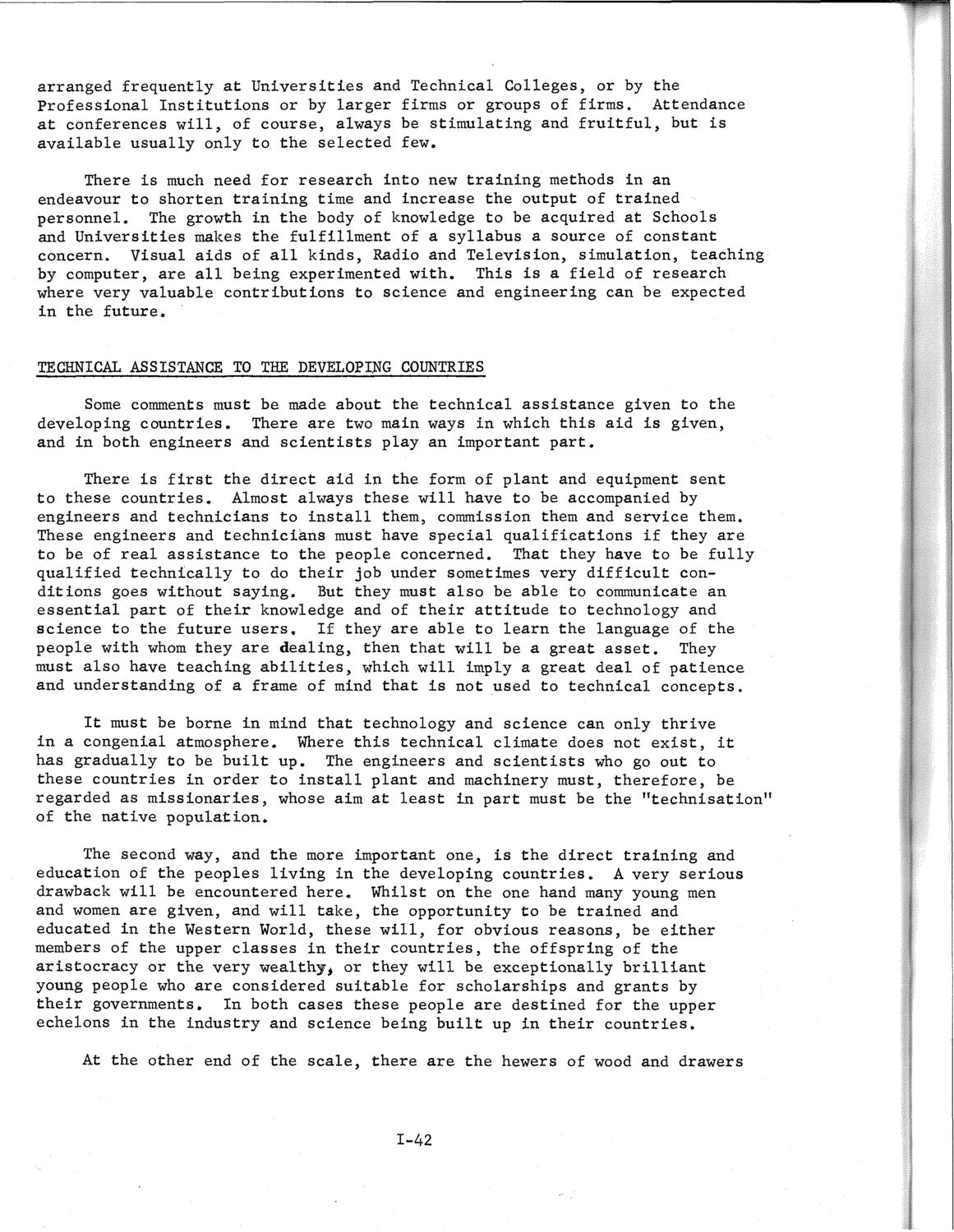| |
| |
Caption: SWE - Proceedings of the First International Conference of Women Engineers and Scientists
This is a reduced-resolution page image for fast online browsing.

EXTRACTED TEXT FROM PAGE:
arranged frequently at Universities and Technical Colleges, or by the Professional Institutions or by larger firms or groups of firms. Attendance at conferences will, of course, always be stimulating and fruitful, but is available usually only to the selected few. There is much need for research into new training methods in an endeavour to shorten training time and increase the output of trained personnel. The growth in the body of knowledge to be acquired at Schools and Universities makes the fulfillment of a syllabus a source of constant concern. Visual aids of all kinds, Radio and Television, simulation, teaching by computer, are all being experimented with. This is a field of research where very valuable contributions to science and engineering can be expected in the future. TECHNICAL ASSISTANCE TO THE DEVELOPING COUNTRIES Some comments must be made about the technical assistance given to the developing countries. There are two main ways in which this aid is given, and in both engineers and scientists play an important part. There is first the direct aid in the form of plant and equipment sent to these countries. Almost always these will have to be accompanied by engineers and technicians to install them, commission them and service them. These engineers and technicians must have special qualifications if they are to be of real assistance to the people concerned. That they have to be fully qualified technically to do their job under sometimes very difficult conditions goes without saying. But they must also be able to communicate an essential part of their knowledge and of their attitude to technology and science to the future users. If they are able to learn the language of the people with whom they are dealing, then that will be a great asset. They must also have teaching abilities, which will imply a great deal of patience and understanding of a frame of mind that is not used to technical concepts. It must be borne in mind that technology and science can only thrive in a congenial atmosphere. Where this technical climate does not exist, it has gradually to be built up. The engineers and scientists who go out to these countries in order to install plant and machinery must, therefore, be regarded as missionaries, whose aim at least in part must be the "technisation" of the native population. The second way, and the more important one, is the direct training and education of the peoples living in the developing countries. A very serious drawback will be encountered here. Whilst on the one hand many young men and women are given, and will take, the opportunity to be trained and educated in the Western World, these will, for obvious reasons, be either members of the upper classes in their countries, the offspring of the aristocracy or the very wealthy^ or they will be exceptionally brilliant young people who are considered suitable for scholarships and grants by their governments. In both cases these people are destined for the upper echelons in the industry and science being built up in their countries. At the other end of the scale, there are the hewers of wood and drawers 1-42
| |